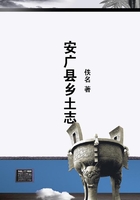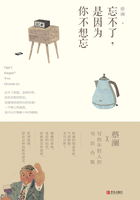THE TURNOVER OF CAPITAL
EFFECT OF THE TIME
OF TURNOVER ON THE MAGNITUDE
OF ADVANCED CAPITALIn this chapter and in the next, the sixteenth, we shall treat of the influence of the time of turnover on the self-expansion of capital.
Take the commodity-capital which is the product of a working period of, say, nine weeks. Let us, for the time being, leave aside that portion of the value of the product which is added to it by the average wear and tear of the fixed capital, and also the surplus- value added to the product during the process of production. The value of this product is then equal to that of the circulating capital, advanced for its production, i.e., of the wages and the raw and auxiliary materials consumed in its production.
Let this value be £9000, so that the weekly outlay is £100.
The period of production, which here coincides with the working period, is therefore nine weeks. It is immaterial whether it is assumed that this is the working period of a continuous product, or whether it is a continuous working period for a discrete product, so long as the quantity of discrete product brought to market at one time costs nine weeks' labour. Let the time of circulation be three weeks. Then the entire period of turnover is twelve weeks. At the end of nine weeks the advanced productive capital is converted into commodity-capital, but not it stays for three weeks in the period of circulation. The new period of production therefore cannot start before the beginning of the thirteenth week, and production would be at a standstill for three weeks, or for a quarter of the entire period of turnover. It again does not make any difference whether it is assumed that it takes so long on an average to sell the product, or that this length of time is bound up with the remoteness of the market or the terms of payment for the goods sold. Production would be standing still for three weeks every three months, making it four times three, or twelve weeks in a year, which means three months, or one-quarter, of the annual period of turnover.
Hence, if production is to be continuous and carried along the same scale week after week, there is only this alternative:
Either the scale of production must be reduced, so that the £900suffice to keep the work going both during the working period and the time of circulation of the first turnover, is then commenced with the tenth week, before the first period of turnover is completed, for the period of turnover is twelve weeks, and the working period nine weeks. A sum of £900 distributed over twelve weeks makes £75 per week. It is evident in the first place that such a reduced scale of business presupposes changed dimensions of the fixed capital and therefore, on the whole, a curtailment of the business. In the second place, it is questionable whether such a reduction can take place at all, for in each business there exists, commensurate with the development of its production, a normal minimum of invested capital essential to maintain its capacity to complete. This normal minimum grows steadily with the advance of capitalist production, and hence it is not fixed. There are numerous intermediate grades between the normal minimum existing at any particular time and the ever increasing normal maximum, a medium which permits of many different scales of capital investment.
Within the limits of this medium reductions may take place, their lowest limit being the prevailing normal minimum.
When there is a hitch in production, when the markets are overstocked, and when raw materials rise in price, etc., the normal outlay of circulating capital is restricted -- once the pattern of the fixed capital has been set -- by cutting down working time to, say, one half. On the other hand, in times of prosperity, the pattern of the fixed capital given, there is an abnormal expansion of the circulating capital, partly through the extension of working time and partly through its intensification. In businesses which have, from the outset, to reckon with such fluctuations, the situation is relieved partly by recourse to the above measures and partly by employing simultaneously a greater number of labourers, in combination with the application of reserve fixed capital, such as reserve locomotives on railways, etc.
However, such abnormal fluctuations are not considered here, where we assume normal conditions.
In order to make production continuous, therefore, the expenditure of the same circulating capital is here distributed over a longer period, over twelve weeks instead of nine. In every section of time there consequently functions a reduced productive capital. The circulating portion of the productive capital is reduced from 100 to 75, or one-quarter. The total amount by which the productive capital functioning for a working period of nine weeks is reduced equals 9 times 25, or £225, or one-quarter of £900. But the ratio of the time of circulation to that of turnover is likewise three-twelfths, or one-quarter. It follows therefore: circulation of the productive capital transformed into commodity-capital, if it is rather to be carried on simultaneously and continuously week after week, and if no special circulating capital is available for this purpose, it can be done only by curtailing productive operations, by reducing the circulating component of the functioning productive capital. The portion of circulating capital thus set free for production during the time of circulation is to the total advanced circulating capital as the time of circulation is to the period of turnover. This applies, as has already been stated, only to branches of production in which the labour-process is carried on on the same scale week after week, where therefore no varying amounts of capital are to be invested in different working periods, as for instance in agriculture.















